Microsoft has previewed the next generation of its Windows Phone platform at the Mobile World Congress. Dubbed Windows Phone 7 Series, the first products are due for the holiday season at the end of 2010.
 Windows Phone 7 is a significant change for the former Windows Mobile platform (see previous post). It combines a Zune-like smooth-flowing user interface, the Zune music and video experience, and Xbox LIVE games and service. And it tightens the platform requirements, including requiring a touch screen.
Windows Phone 7 is a significant change for the former Windows Mobile platform (see previous post). It combines a Zune-like smooth-flowing user interface, the Zune music and video experience, and Xbox LIVE games and service. And it tightens the platform requirements, including requiring a touch screen.
But the biggest news is Microsoft's push to move beyond individual apps, to make your phone the "hub" of data and information, especially updated from online sites -- using "live tiles" on Start screen.
At a first look, the Windows Phone 7 design brings together several ideas from other smartphones:
- Like the Apple iPhone, it's now a full-fledged media player, albeit designed to work like the Zune HD (see previous post) and to sync with the Zune PC software.
- Like Android phones, all Windows Phone 7 devices now will have dedicated hardware buttons for Back, Start (the Windows button), and Search (although there's no Menu button -- instead there's an app options bar / bar at the bottom of the screen). The design finally abandons the Windows Mobile phone buttons for Start and End Call, and updates the Zune design which had only one button for Home.
- Like Palm OS, Windows Phone 7 provides integrated views of information from the different aspects of your life -- personal and business, local and online, and social networking sites -- to view all your photos or contacts or calendar entries together, even though they come from multiple sources.
- Like Android, Windows Phone 7 lets you organize and customize your home screen, not just with favorite apps and contacts and links, but with dynamic "live tiles" (i.e., widgets) that display live feeds from applications and Web services.
But the deeper change in Windows Phone 7 is the move away from individual apps to more integrated "hubs" that provide common access across multiple sources. The tiles on the Start screen are doorways to these hubs, including People, Pictures, Games, Music + Video, Marketplace, and Office.
For example, for communicating with people, on Android you need to run different applications for Messaging vs. Gmail vs. other Email, plus separately check for friend updates on a various social networking sites by downloading individual associated apps. But on Windows Phone 7, the People hub integrates contacts and social network updates in one view -- and you also can post your own updates to these sites.
Similarly, the Pictures hub presents combined albums for your local and PC and online photos, plus updated photos from your friends online. And all these use the Zune interface approach, with automatic organization including Recently viewed items and What's New updates.
The open question, then, is how this more controlled and tightly integrated platform can still allow phone manufacturers and cellular carriers to customize and distinguish their offerings, and allow software developers to create innovative apps. At the announcement, Microsoft insisted that there was still room for customization and innovation, for example though extensions to the hubs in lieu of separate apps.
But this was still an early announcement of plans for products that are due out around the end of the year, so there are more details to come.
See the Windows Phone news site for videos of the introduction and key features of Windows Phone 7
See my Mobile Communications Gallery for more on smartphones
See my Media Players Gallery for more on the Zune and wireless media players
 Apple has updated the App Store within iTunes to allow you to share information about an app through a standard Web browser. This certainly makes it easier for reviewers and even enthusiasts to pass along pointers to interesting apps (see previous post).
Apple has updated the App Store within iTunes to allow you to share information about an app through a standard Web browser. This certainly makes it easier for reviewers and even enthusiasts to pass along pointers to interesting apps (see previous post).
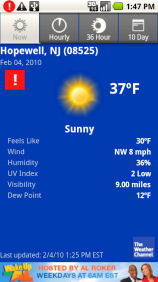 Even an apparently straightforward app like
Even an apparently straightforward app like 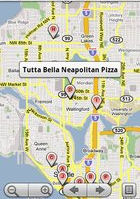
 Microsoft has lowered the price for its
Microsoft has lowered the price for its 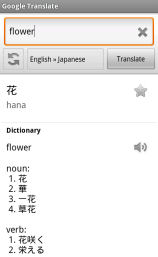
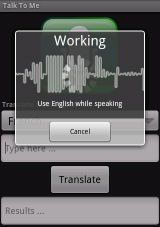
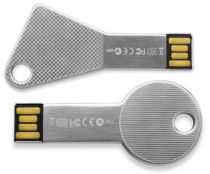
 Windows Phone 7 is a significant change for the former Windows Mobile platform (see
Windows Phone 7 is a significant change for the former Windows Mobile platform (see  Even better, you can use the
Even better, you can use the  Or try
Or try  But why require barcodes? The new
But why require barcodes? The new  Shopper packages the product search features demonstrated in the earlier
Shopper packages the product search features demonstrated in the earlier 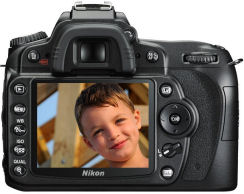 Still or motion? Camera or camcorder? Technology is converging -- as even consumer digital cameras shoot HD video, and video camcorders shoot multi-megapixel photos. And the trend has continued into professional Digital SLR cameras, which have evolved to add the ability to shoot HD video, starting with the
Still or motion? Camera or camcorder? Technology is converging -- as even consumer digital cameras shoot HD video, and video camcorders shoot multi-megapixel photos. And the trend has continued into professional Digital SLR cameras, which have evolved to add the ability to shoot HD video, starting with the